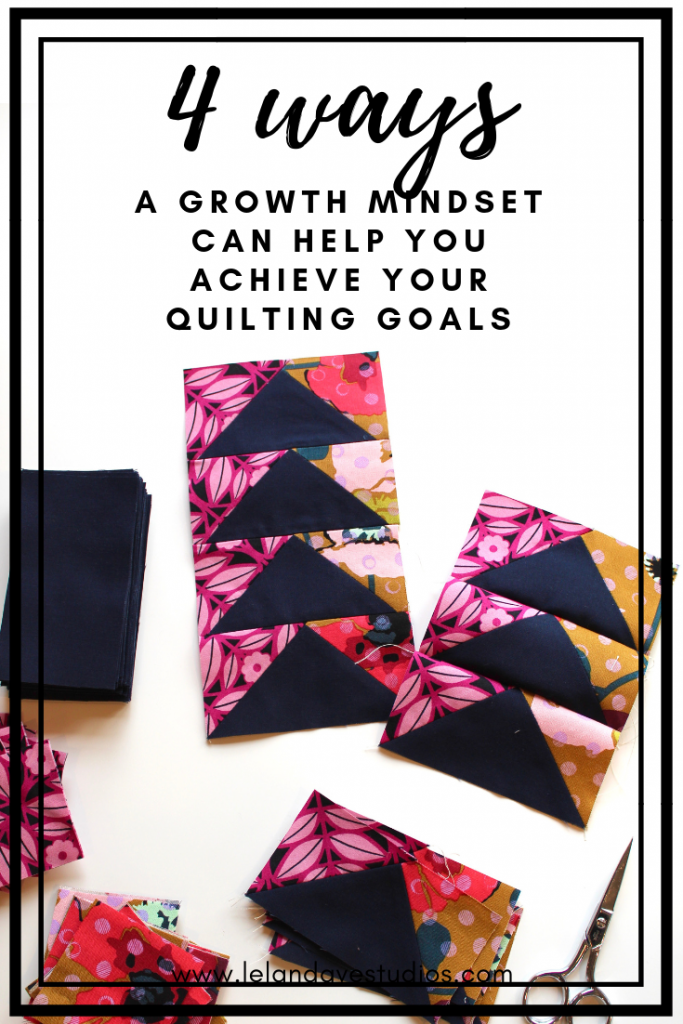I’ve recently been reading about “growth mindsets.”
The concept, set forth by Carol Dweck some thirty years ago, states that our mindset determines how we handle successes and failures. Those with a “fixed” mindset see life as established and believe that there is little they can do to change their circumstances. They believe that things like intelligence, basic abilities, and talents do not change from that which they were born with. Those with a “growth” mindset see these characteristics, and therefore their situation in life, as capable of changing. Those with a growth mindset are better able to handle setbacks and overcome obstacles because they believe there is always something new to be learned and that hard work can change any outcome.
The good news is that even if you are currently in a fixed mindset, you are capable of developing a growth mindset if you work toward it. Most of us are a combination of both mindsets in certain areas of life, but we can always work toward more growth.
I definitely don’t consider myself as having been born with a natural “growth mindset”, but I do strive to change that on a daily basis. I took a quiz to assess my current mindset, and if you’d like to take the quiz, too, you can do so here. The results really captured my essence with this paragraph:
…you may still think that achievement should come easily and feel a bit discouraged when you perform poorly at something. You are moving toward a growth mindset, but there may be a few ideas holding you back from achieving all that you are capable of doing. It could be that you are reluctant to risk failure, or feel concerned about others’ judgments of you, because you see performance as a measure of your ability. Or you may have a few areas where you are not certain that you can “cut it.” If you are holding back from taking on challenges or trying new things, you probably have more potential than you are using!
The good news is that the quiz recognized my efforts to improve! The bad news is that it also caught the fact that I let my fear of failure and being vulnerable sometimes get in the way of going for my dreams. So I did some research on how to change that, particularly when it comes to my creative work. Read on to see what I found.
Applying a Growth Mindset to Quilting
Growth mindset is an important way to achieve your quilting goals, and here’s why: focusing on a growth mindset puts an emphasis on the process rather than the outcome. What does that mean?
It means that you are more concerned with whether or not you are stretching yourself — by trying a new technique, working in a color combination outside of your comfort zone, or working without a plan — than what the finished quilt will look like. Even if the end result is a quilt that is so ugly that you have to stuff it in a drawer, you will see that ugly quilt as a success because of what you learned from the process of making it. In fact, the things you learned in the process will encourage you to try that process again, only this time you will be starting from a new place. This time, you will begin the process with the knowledge you learned from the last experience. See? Just like that, you flip the script! #winning!
Steps to Building a Growth Mindset
There have been many articles written about how to build a growth mindset, but the key points that come up time and again are:
1. Be Aware
The first step to changing anything in life is being aware of what needs to change. By staying focused and present when dealing with challenges, you can cultivate a growth mindset by focusing on the process rather than the outcome.
2. Put in the Work and Don’t Give Up
It is essential to remember that challenges are opportunities to do something you’ve never done before. Often we are so used to (read: comfortable with) things coming easily to us, that we tend to shy away from things when they seem challenging. We don’t want to make mistakes or look foolish. Building grit and determination is a like building a memory muscle. The more we use it, the more it will develop. That leads to the next point.
3. Accept Mistakes
It is essential to recognize that having room to improve does not mean you are currently a failure. Again, coming back to the focus on the process rather than the outcome allows us to make mistakes and try new ways of doing things. How else can you learn if you don’t try?
4. Find a Mentor
Having a mentor to serve as a growth mindset role model can help you to stay on track when things get difficult. To learn more about the importance of having, or being, a mentor, click here.
Now it’s your turn. What are some of the things you do to help cultivate a growth mindset?
For additional reading and resources on Growth Mindset, check here:
How A Growth Mindset enhances Creativity.
How to encourage children (and adults) to make mistakes and take risks.
The importance of facing our problems head-on.
Why You Need a Growth Mindset To Achieve Your Goals.
2 Comments
Comments are closed.






Loved your post. It was a good reminder to continue to stretch my creative muscles. Growth mindset was an important concept that we worked on developing in young children back in my career as a teacher.
Thank you, Marla! I did come across a number of articles where the concept of growth mindset was used with children in classrooms. I think it’s great that it connected with you! I feel like there are always places in life that we can grow, and I’m really enjoying this exploration of creativity and how the concept of growth applies to it!